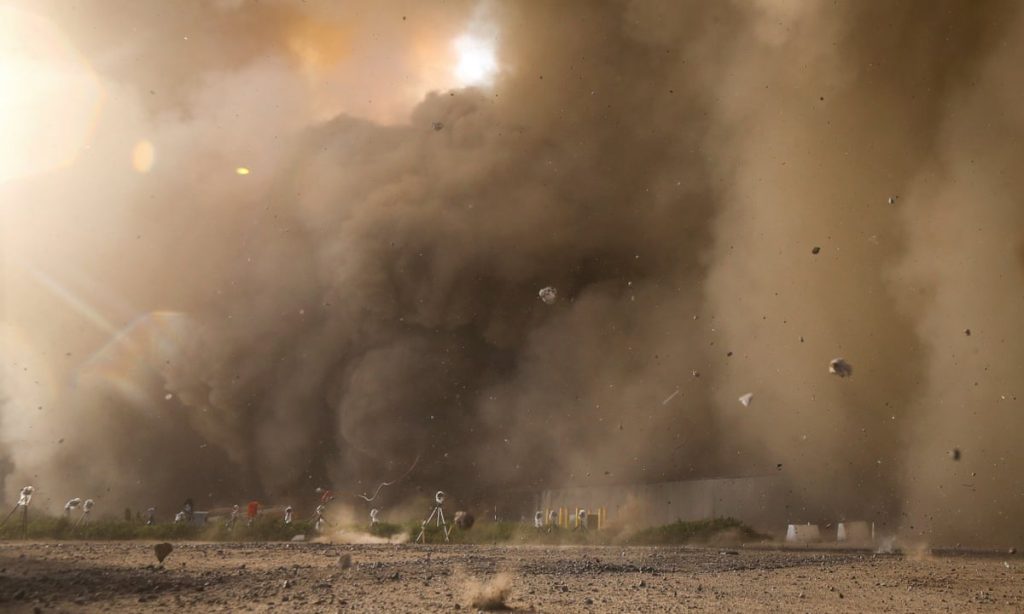
SpaceX Rocket Explodes Again, Raining Debris from the Sky for the Second Time in a Row
In a shocking repeat of recent events, a SpaceX rocket exploded in midair during a test flight, marking the second consecutive incident involving the company’s latest space mission. The explosion occurred just minutes after liftoff, sending large chunks of debris plummeting from the sky and forcing an investigation into what went wrong. This catastrophic event highlights the inherent risks of space exploration, even for the most advanced and well-funded private aerospace company.
The Launch and Immediate Aftermath
On the morning of the scheduled test flight, the Falcon X Rocket, SpaceX’s latest heavy-lift vehicle, was launched from the Kennedy Space Center in Florida. The mission was meant to test the rocket’s capabilities for future interplanetary missions. Initially, everything appeared to be going according to plan. The rocket soared into the sky, leaving behind a trail of smoke and a growing sense of excitement among onlookers and space enthusiasts worldwide.
However, just 60 seconds after launch, the rocket’s engines malfunctioned. Witnesses at the site, including those viewing the event through live streams, saw an unusual bright flash followed by a massive explosion. The vehicle disintegrated mid-air, sending large pieces of the rocket’s shell and components raining down over a wide area. The explosion generated a thunderous sound, echoing across the launch site and nearby towns. The force was so intense that it shook windows miles away.
SpaceX’s Previous Failure
This explosion comes only days after a similar incident. Just last week, SpaceX experienced a launch failure involving another of its rockets, which also ended in a dramatic explosion shortly after liftoff. The company had hoped to learn from the first failure and refine their processes, but with this second consecutive explosion, many are questioning what is going wrong.
Elon Musk, the founder and CEO of SpaceX, has long maintained a philosophy of pushing the envelope when it comes to space exploration. While SpaceX has had numerous successes, including regular cargo resupply missions to the International Space Station (ISS) and the development of the reusable Falcon 9, the recent failures have raised eyebrows. In both cases, the explosions were linked to issues with the rocket’s propulsion system, though SpaceX officials have yet to release a detailed explanation or findings from their investigations.
Debris Raining from the Sky
One of the most alarming aspects of the recent failure was the rain of debris that followed the explosion. According to local officials, large sections of the rocket, including metal fragments, fuel tanks, and other components, fell from the sky in a scattered pattern. Some of these fragments reportedly landed in nearby rural areas, though no injuries were reported. Local authorities quickly cordoned off the areas where debris had fallen to prevent anyone from approaching the potentially dangerous materials.
SpaceX, in cooperation with local and federal agencies, initiated a thorough sweep of the crash site to collect all remaining debris. The company has yet to comment on the possible dangers posed by the rocket’s components, many of which contained hazardous materials from the vehicle’s fuel systems.
The scattered debris has sparked discussions on the safety protocols for launching rockets in populated areas. Critics argue that the fact that these explosions occurred over populated land poses a significant risk to civilians. Musk and SpaceX’s engineers have faced criticism for their ambitious launch schedule, which some argue may be outpacing their ability to address critical safety concerns.
What Went Wrong?
Though no official statement has been released yet regarding the specific cause of the failure, experts suggest that the issue could stem from problems with the rocket’s complex propulsion systems. The Falcon X, like many of SpaceX’s rockets, utilizes multiple engines working in unison. If one or more of these engines fails or performs erratically, it can quickly lead to catastrophic failure.
Other speculations center around the possibility of a malfunction in the rocket’s staging sequence, which could have disrupted the rocket’s balance, or failure in the fuel tanks, leading to an uncontrollable explosion. Given the complexity of the technology involved in the mission, the investigation is expected to take some time, and SpaceX engineers are likely already working on potential fixes.
SpaceX’s Response
In the aftermath of the explosion, SpaceX has vowed to continue investigating and improving their rockets. While the company has been successful in developing reusable technology, including the Falcon 9 and Dragon capsules, this incident serves as a harsh reminder that space travel is still an incredibly volatile and risky endeavor.
“We will learn from this,” said SpaceX’s spokesperson in a brief press conference. “Every failure is a step toward success, and we are committed to ensuring that the future of space exploration is safer and more reliable for everyone involved.”
Despite the setbacks, SpaceX remains confident in its ability to rebound from the failure. With an ambitious roadmap that includes plans to send humans to Mars and beyond, the company continues to dominate the private aerospace sector. However, these explosions underscore the risks inherent in even the most well-funded and experienced space programs.
The Future of Space Exploration
While these failures are certainly setbacks, they are not likely to derail the broader goals of space exploration. Many experts believe that the future of space travel requires learning from such mistakes. While the public may be quick to criticize, those in the field know that technological advancement often involves dealing with such risks head-on.
As SpaceX recovers from this latest setback, it will likely adopt new strategies to ensure that future launches are less prone to catastrophic failure. The lessons learned from this string of incidents may ultimately pave the way for a new era of space exploration, though it’s clear that the road to reliable and safe space travel is still fraught with challenges.
Ultimately, these explosions remind us of the immense risks associated with space exploration. Despite the significant technological advancements made in recent years, space travel remains a high-stakes venture that requires constant vigilance and innovation. Only time will tell how SpaceX—and the wider space industry—will respond to these challenges as they continue their mission to expand humanity’s presence beyond Earth.





